Introduction
Eight Treasure Rice Dumplings, known as Ba Bao Zong in Mandarin, are a quintessential dish in Chinese cuisine, particularly celebrated during the Dragon Boat Festival. These pyramid-shaped delights, wrapped in bamboo leaves, are a harmonious blend of textures and flavors, combining glutinous rice with a medley of fillings. The term “Eight Treasure” refers to the traditional inclusion of eight distinct ingredients, each chosen for its symbolic significance, nutritional value, and ability to create a balanced taste profile. This article delves into the intricate composition of Eight Treasure Rice Dumplings, exploring the historical, cultural, and culinary dimensions of their ingredients.
Historical and Cultural Context
The origins of rice dumplings, or zongzi, date back over 2,000 years to the Warring States period in China. Legend has it that they were created to honor Qu Yuan, a patriotic poet and minister who drowned himself in the Miluo River to protest corruption. Locals threw sticky rice dumplings into the river to prevent fish from devouring his body, a tradition that evolved into the Dragon Boat Festival. Over centuries, the recipe diversified, with regional variations emerging. The Eight Treasure Rice Dumpling, in particular, reflects China’s agrarian heritage, incorporating ingredients that symbolize prosperity, unity, and abundance.
The Core Ingredients: A Symphony of Flavors and Textures
The allure of Eight Treasure Rice Dumplings lies in their meticulous selection of ingredients. While recipes may vary, the following components are commonly featured:
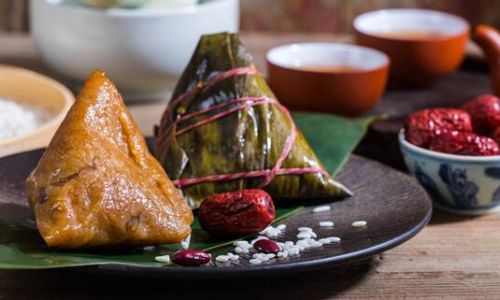
-
Glutinous Rice (Sticky Rice)
The foundation of any zongzi, glutinous rice provides the dumpling’s signature chewy texture. Soaked for several hours, the grains absorb moisture, ensuring a soft yet cohesive structure when steamed or boiled. Nutritionally, glutinous rice is rich in carbohydrates, offering sustained energy. -
Mung Beans
Whole or split mung beans are often included for their earthy flavor and ability to balance the dumpling’s richness. They are typically soaked, steamed, and mashed into a paste, adding a subtle sweetness and a smooth counterpoint to the sticky rice. -
Red Beans (Adzuki Beans)
Red beans contribute a creamy, mildly sweet filling. Like mung beans, they are soaked, cooked, and sometimes sweetened with sugar to create a paste. Their vibrant hue also adds visual appeal.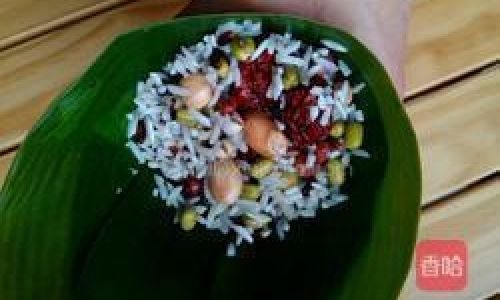
-
Chinese Dates (Jujubes)
Dried jujubes, or hong zao, are a staple in Chinese desserts. Their natural sweetness and chewy texture complement the dumpling’s other ingredients. Rich in iron and fiber, they also offer a subtle caramel-like note. -
Lotus Seeds
Dried lotus seeds, or lian zi, are prized for their delicate flavor and crumbly texture. Often split and de-hearted to remove bitterness, they are roasted or boiled until tender, adding a nutty undertone. -
Chestnuts
Whole or halved chestnuts provide a buttery, starchy element. Roasted before inclusion, they enhance the dumpling’s texture with their mealy consistency and mild sweetness.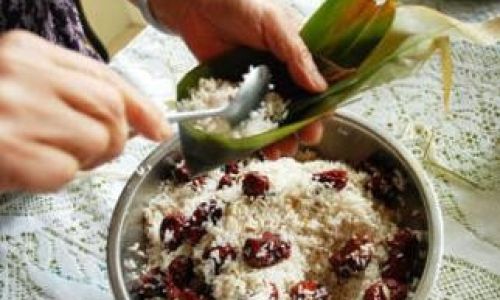
-
Dried Shiitake Mushrooms
Rehydrated shiitake mushrooms introduce an umami depth. Sliced into strips, they contribute a savory, meaty flavor that contrasts with the dumpling’s sweeter components. -
Salted Duck Eggs
A quintessential ingredient in southern Chinese recipes, salted duck egg yolks add a briny, sandy texture. The yolks are often halved and placed at the center, creating a rich, golden surprise.
Optional and Regional Variations
While the eight core ingredients form the classic recipe, regional adaptations abound. For instance:
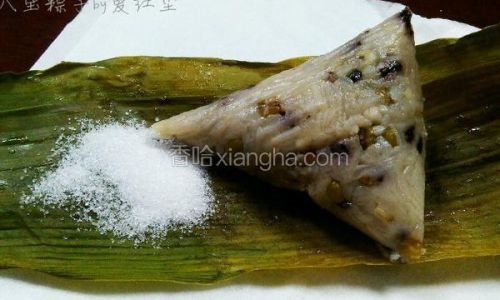
- Cantonese-Style: Includes dried scallops, pork belly, and mushrooms for a savory twist.
- Zhejiang Province: Features bamboo shoots and ham for a smoky flavor.
- Taiwanese Adaptations: May incorporate peanuts, raisins, or even taro.
Nutritional Profile and Health Benefits
Eight Treasure Rice Dumplings are a microcosm of Chinese dietary philosophy, balancing grains, legumes, nuts, and dried fruits. Key nutrients include:
- Complex Carbohydrates: From glutinous rice and beans, providing sustained energy.
- Fiber: Mung beans, red beans, and jujubes aid digestion.
- Protein: Legumes and chestnuts offer plant-based protein.
- Antioxidants: Lotus seeds and jujubes contain polyphenols.
However, moderation is advised due to the dumpling’s caloric density, particularly in savory variations with pork or salted eggs.
Preparation Techniques: Artistry in Wrapping
Crafting Eight Treasure Rice Dumplings is a labor of love, requiring precision and patience:
- Soaking Ingredients: Glutinous rice, beans, and lotus seeds are soaked overnight to soften.
- Preparing Fillings: Jujubes are pitted, mushrooms rehydrated, and chestnuts roasted.
- Layering: A bamboo leaf is folded into a cone, filled with rice, and layered with fillings.
- Wrapping: The leaf is secured with twine, creating a tight pyramid to prevent leakage during boiling.
- Cooking: Dumplings are simmered for 4–6 hours, allowing flavors to meld.
Symbolism and Cultural Significance
Each ingredient carries symbolic weight:
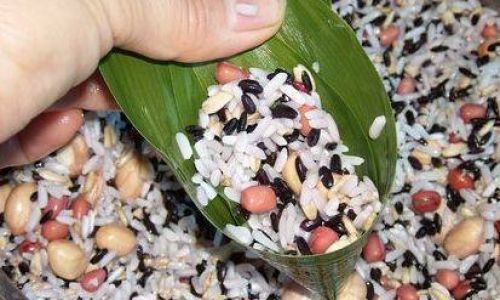
- Glutinous Rice: Unity and togetherness.
- Red Beans: Prosperity and joy.
- Lotus Seeds: Fertility and harmony.
- Chestnuts: Good fortune and strength.
The act of sharing zongzi during festivals reinforces communal bonds, echoing the dumpling’s role as a symbol of collective heritage.
Modern Adaptations and Global Appeal
In recent years, chefs have experimented with innovative fillings, such as matcha, black sesame, or even chocolate, catering to contemporary palates. However, purists argue that tradition demands adherence to the eight treasures, preserving the dish’s cultural authenticity.
Conclusion
Eight Treasure Rice Dumplings are a testament to China’s culinary ingenuity, blending history, symbolism, and gastronomy into a single bite. Each ingredient—from the humble glutinous rice to the prized salted egg yolk—tells a story of resilience, abundance, and the enduring power of tradition. As global appreciation for Chinese cuisine grows, these dumplings remain a beloved emblem of cultural pride, inviting diners to savor the past while embracing the future. Whether enjoyed during a festival feast or prepared in a modern kitchen, the Eight Treasure Rice Dumpling continues to inspire awe, one layered, aromatic bite at a time.
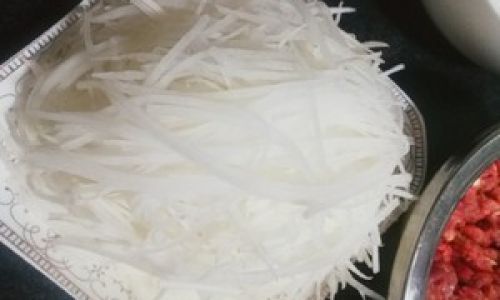
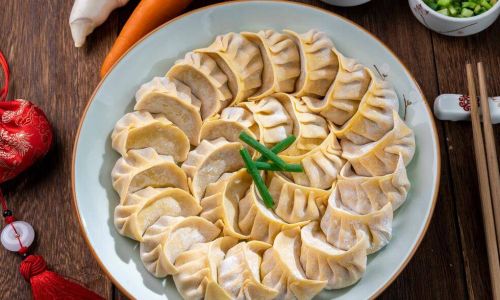
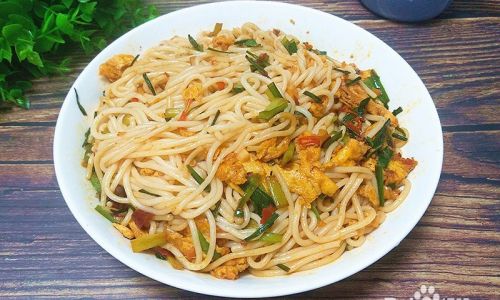
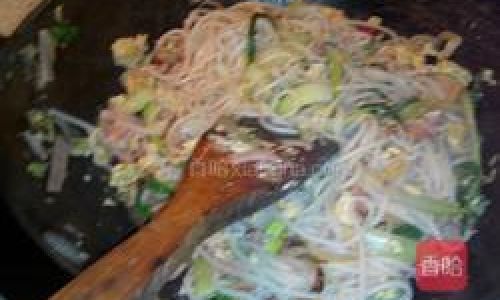

0 comments